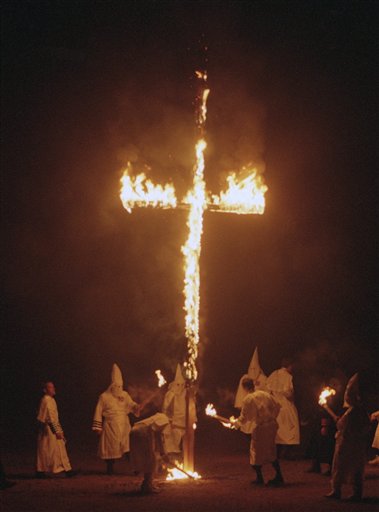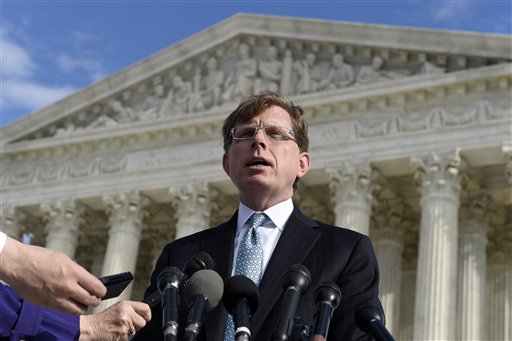True Threats – Virginia v. Black is most comprehensive Supreme Court definition
By Kevin Francis O’Neill (Updated June 2017 by David L. Hudson Jr.)

In legal parlance a true threat is a statement that is meant to frighten or intimidate one or more specified persons into believing that they will be seriously harmed by the speaker or by someone
acting at the speaker’s behest. True threats constitute a category of speech — like obscenity, child pornography, fighting words, and the advocacy of imminent lawless action — that is not protected by the First Amendment. Although the other aforementioned categories have received specific definitions from the Supreme Court, the Court has mentioned the true threats category only in a handful of cases and has never fully developed a test to delineate its boundaries.
Circuit courts have several approaches to true threat cases
Left to their own devices, the federal circuit courts of appeal have created several approaches to their treatment of true threats cases. Among these is a particularly detailed and speech-protective test crafted by the U.S. Court of Appeals for the Second Circuit. The court stated in United States v. Kelner (2d Cir. 1976) that a true threat is a threat that “on its face and in the circumstances in which it is made is so unequivocal, unconditional, immediate, and specific as to the person threatened, as to convey a gravity of purpose and imminent prospect of execution.” Until the Supreme Court formulates a definitive test for true threats, lawyers must invoke the test that prevails in their jurisdictions.
Virginia v. Black is most comprehensive Supreme Court definition true threats
The Supreme Court’s most comprehensive description of true threats on record is found in Virginia v. Black (2003), which ruled that Virginia’s ban on cross burning with intent to intimidate did not violate the First Amendment. The Supreme Court held that states may criminalize cross burning as long as the state statute clearly puts the burden on prosecutors to prove that the act was intended as a threat and not as a form of symbolic expression: “‘True threats’ encompass those statements where the speaker means to communicate a serious expression of an intent to commit an act of unlawful violence to a particular individual or group of individuals. . . . Intimidation in the constitutionally proscribable sense of the word is a type of true threat, where a speaker directs a threat to a person or group of persons with the intent of placing the victim in fear of bodily harm or death.”
The Watts factors help determine if a statement is a true threat
Courts have identified what have come to be known as “the Watts factors” in true-threat analysis: (1) the fact that the comments were made during a political debate; (2) the conditional nature of the threat; and (3) the reaction of the listeners, many of whom laughed when they heard Watts’ comments.

True threats litigation is complicated by existing laws prohibiting threats
Watts serves as a reminder that true threats litigation is always complicated by statutory provisions that the court must construe and apply. There are many criminal statutes that prohibit threats. It is a crime, for example, under U.S. Code 18 to convey threatening communications through the U.S. mail system; to extort money through threats of violence or kidnapping; or to threaten a federal judge, the president, or a former president with kidnapping, assault or murder.
Sotomayor urged Court to re-evaluate true threat jurisprudence
First Amendment advocates hoped that the Supreme Court would clarify true-threats jurisprudence when it decided Elonis v. United

States (2015). However, the Court in Elonis reversed the conviction based on faulty jury instructions without deciding the underlying First Amendment issues.
In Perez v. Florida (2017), Justice Sonia Sotomayor urged the Court to re-evaluate its true threats jurisprudence in a future case with the proper procedural posture. “States must prove more than the mere utterance of threatening words – some level of intent is required,” she wrote. “The Court should also decide precisely what level of intent suffices under the First Amendment – a question we avoided two Terms ago in Elonis.”
Statutory and constitutional analysis are different in true threat cases
It is essential to distinguish between the court’s statutory analysis (construing the elements of the criminal statute) and its constitutional analysis (applying the true threats doctrine to the defendant’s statement). The prosecution must satisfy all the elements of the statute, but that is not the end of the analysis — at least where the defendant interposes a constitutional challenge. As a constitutional matter, the statute can criminalize only those threats that fall under the “true threats” definition that prevails within a given jurisdiction.
This article was originally published in 2009 and updated in 2017. Kevin Francis O’Neill is an associate professor at Cleveland-Marshall College of Law where he teaches First Amendment, Evidence, Civil Procedure, and Pretrial Practice. His scholarship focuses on the Speech Clause of the First Amendment. Prior to entering academia, Mr. O’Neill served as the Legal Director for the American Civil Liberties Union of Ohio where he focused special attention on First Amendment issues, reproductive freedom, police misconduct, and government mistreatment of the homeless.
cited https://mtsu.edu/first-amendment/article/1025/true-threats
To Learn More…. Read MORE Below and click the links
Learn More About True Threats Here below….
We also have the The Brandenburg v. Ohio (1969) – 1st Amendment
CURRENT TEST = We also have the The ‘Brandenburg test’ for incitement to violence – 1st Amendment
We also have the The Incitement to Imminent Lawless Action Test– 1st Amendment
We also have the True Threats – Virginia v. Black is most comprehensive Supreme Court definition – 1st Amendment
We also have the Watts v. United States – True Threat Test – 1st Amendment
We also have theClear and Present Danger Test – 1st Amendment
We also have theGravity of the Evil Test – 1st Amendment
We also have the Elonis v. United States (2015) – Threats – 1st Amendment
Learn More About What is Obscene….
We also have the Miller v. California – 3 Prong Obscenity Test (Miller Test) – 1st Amendment
We also have the Obscenity and Pornography – 1st Amendment
Learn More About Police, The Government Officials and You….
We also have theBrayshaw v. City of Tallahassee – 1st Amendment – Posting Police Address
We also have thePublius v. Boyer-Vine –1st Amendment – Posting Police Address
We also have the Lozman v. City of Riviera Beach, Florida (2018) – 1st Amendment – Retaliatory Police Arrests
We also have the Nieves v. Bartlett (2019) – 1st Amendment – Retaliatory Police Arrests
We also have the Freedom of the Press – Flyers, Newspaper, Leaflets, Peaceful Assembly – 1st Amendment
We also have the Insulting letters to politician’s home are constitutionally protected, unless they are ‘true threats’ – 1st Amendment
We also have the Introducing TEXT & EMAILDigital Evidencein California Courts – 1st Amendment
We also have the First Amendment Encyclopedia very comprehensive – 1st Amendment
ARE PEOPLE LYING ON YOU? CAN YOU PROVE IT? IF YES…. THEN YOU ARE IN LUCK!
We also have the Penal Code 118 PC – California Penalty of “Perjury” Law
We also have theFederal Perjury – Definition by Law
We also have the Penal Code 132 PC – Offering False Evidence
We also have the Penal Code 134 PC – Preparing False Evidence
We also have thePenal Code 118.1 PC – Police Officers Filing False Reports
We also have the Spencer v. Peters– Police Fabrication of Evidence – 14th Amendment
We also have the Penal Code 148.5 PC – Making a False Police Report in California
We also have the Penal Code 115 PC – Filing a False Document in California
Know Your Rights Click Here (must read!)
Under 42 U.S.C. $ection 1983 – Recoverable Damage$
42 U.S. Code § 1983– Civil Action for Deprivation of Right$
$ection 1983 Lawsuit – How to Bring a Civil Rights Claim
18 U.S. Code § 242 – Deprivation of Right$ Under Color of Law
18 U.S. Code § 241 – Conspiracy against Right$
$uing for Misconduct – Know More of Your Right$
Police Misconduct in California – How to Bring a Lawsuit
New Supreme Court Ruling – makes it easier to sue police
RELATIONSHIPWITH YOURCHILDREN& YOURCONSTITUIONAL RIGHT$ + RULING$
YOU CANNOT GET BACK TIME BUT YOU CAN HIT THOSE PUNKS WHERE THEY WILL FEEL YOU = THEIR BANK
We also have the 9.3 Section 1983 Claim Against Defendant as (Individuals) — 14th Amendment thisCODE PROTECTS all US CITIZENS
We also have the Amdt5.4.5.6.2 – Parental and Children’s Rights 5th Amendment thisCODE PROTECTS all US CITIZENS
We also have the 9.32 – Interference with Parent / Child Relationship – 14th Amendment thisCODE PROTECTS all US CITIZENS
We also have the California Civil Code Section 52.1Interference with exercise or enjoyment of individual rights
We also have the Parent’s Rights & Children’s Bill of RightsSCOTUS RULINGS FOR YOUR PARENT RIGHTS
We also have a SEARCH of our site for all articles relatingfor PARENTS RIGHTS Help!
Contesting / Appeal an Order / Judgment / Charge
Options to Appealing– Fighting A Judgment Without Filing An Appeal Settlement Or Mediation
Cal. Code Civ. Proc. § 1008 Motion to Reconsider
Penal Code 1385 – Dismissal of the Action for Want of Prosecution or Otherwise
Penal Code 1538.5 – Motion To Suppress Evidence in a California Criminal Case
CACI No. 1501 – Wrongful Use of Civil Proceedings
Penal Code “995 Motions” in California – Motion to Dismiss
WIC § 700.1 – If Court Grants Motion to Suppress as Evidence
 Epic Criminal / Civil Rights SCOTUS Help – Click Here
Epic Criminal / Civil Rights SCOTUS Help – Click Here
 Epic Parents SCOTUS Ruling – Parental Rights Help – Click Here
Epic Parents SCOTUS Ruling – Parental Rights Help – Click Here
